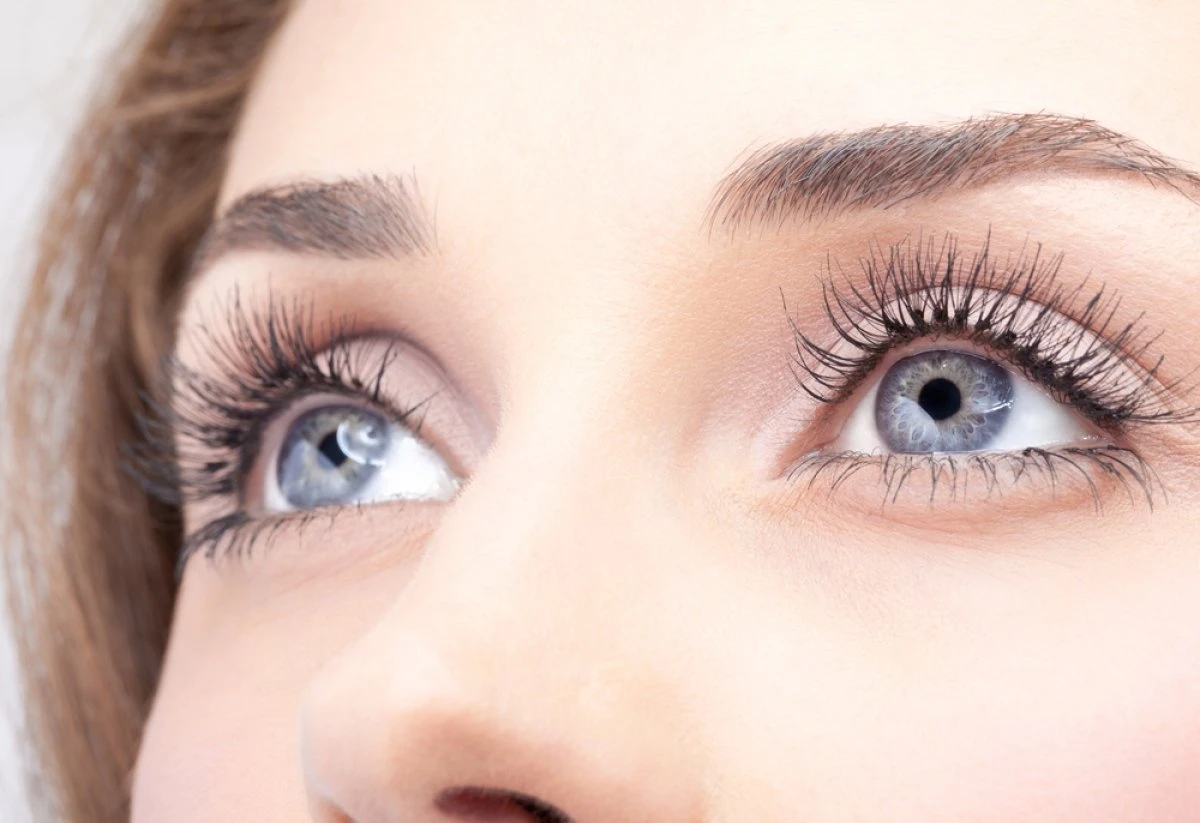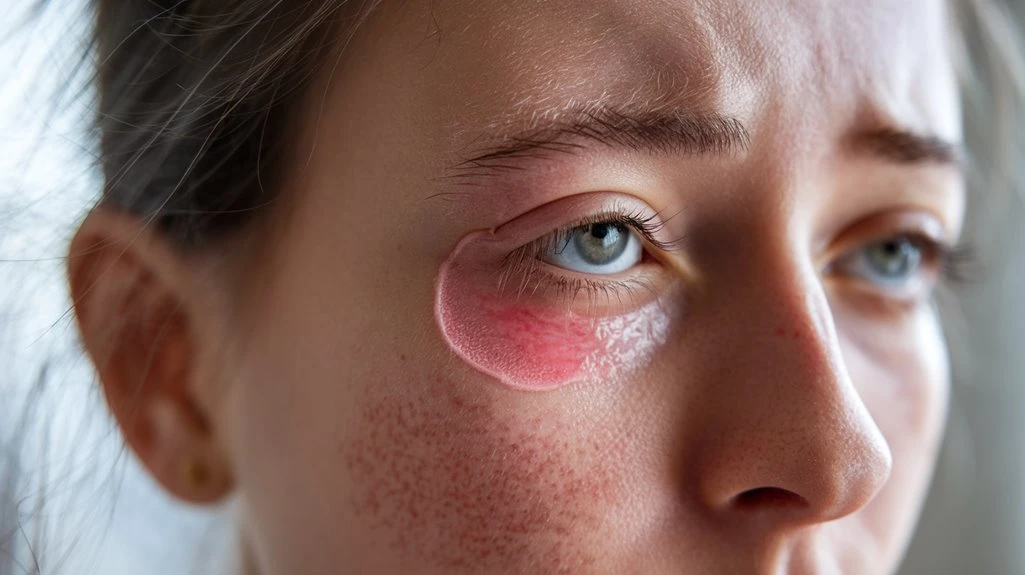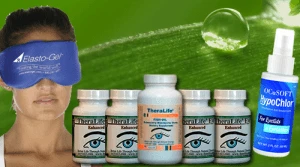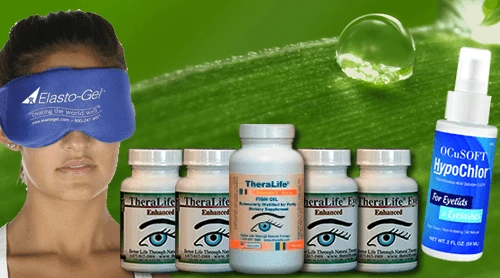If you’re experiencing allergic blepharitis, characterized by symptoms such as redness, swelling, itching, and flaking at your eyelid margins, TheraLife offers comprehensive solutions to alleviate these symptoms. Their products are specially designed to address eye conditions exacerbated by allergens like pollen, contact lens solutions, or cosmetics. Customers benefit from TheraLife’s holistic approach, which includes gentle eyelid hygiene, natural anti-inflammatory supplements, and lifestyle advice to avoid triggers. Long-term management is supported through dietary measures and regular follow-up, with TheraLife’s products providing a natural alternative to traditional medications, reducing dependency on topical antihistamines or corticosteroids. Explore TheraLife’s innovative solutions to optimize your ocular health and ensure effective management of allergic blepharitis.
Best Allergic Blepharitis Treatment From TheraLife- When Drops Don’t Work.
Key Takeaways
- Allergic blepharitis presents with swollen, red, itchy eyelids, crusting, and discomfort, often worse upon waking.
- Common triggers include environmental allergens, cosmetics, and preservatives in contact lens solutions.
- Treatment involves eyelid hygiene, topical antihistamines or corticosteroids, oral antihistamines, and cold compresses for relief.
- Avoiding known allergens and using preservative-free products can help prevent recurring symptoms.
- Regular follow-ups with an eye care professional are essential for monitoring and adjusting treatment.
Understanding Allergic Blepharitis
Allergic blepharitis refers to inflammation of the eyelid margins triggered by hypersensitivity reactions, often to environmental allergens or contact irritants. When you encounter these allergens, your immune system responds with an allergic reaction, releasing histamine and other inflammatory mediators. This process leads to classic manifestations of eyelid inflammation such as erythema, edema, pruritus, and scaling along the lash line. You might also notice tearing, burning, or a foreign body sensation due to the inflammatory process affecting the delicate eyelid tissues. Chronic or repeated exposure can exacerbate symptoms and contribute to secondary complications, such as thickened lid margins or loss of eyelashes. Accurate identification of allergic responses is essential, as the underlying pathophysiology involves both IgE-mediated and non-IgE-mediated immune mechanisms, requiring targeted management. Inflammatory cytokines such as IL-1beta and TNF-alpha play a significant role in the inflammatory basis of allergic blepharitis, contributing to the severity of symptoms.
Common Triggers of Eyelid Allergies
You may develop eyelid allergic reactions when exposed to environmental allergens such as pollen, pet dander, or dust mites. Cosmetic products and skincare formulations often contain preservatives and fragrances that act as sensitizing agents, precipitating periocular inflammation. Additionally, components in contact lens solutions, particularly certain disinfectants, can provoke hypersensitivity responses in susceptible individuals. Bacteria thrive in dark, dry environments of makeup products, increasing the risk of eye infections and allergic reactions.
Common Environmental Allergens
Multiple environmental allergens can trigger eyelid inflammation, particularly in individuals predisposed to hypersensitivity reactions. If you experience allergic blepharitis, pollen exposure represents a significant risk, especially during peak pollination seasons when airborne allergens readily contact periocular skin. Pollen grains can adhere to the eyelashes and eyelid margins, provoking localized immune responses. Dust mites are another prevalent trigger; their protein antigens accumulate in household dust and bedding, leading to chronic exposure if environments aren’t adequately controlled. Upon contact, these allergens stimulate IgE-mediated mast cell degranulation, initiating inflammation characterized by eyelid erythema, edema, and pruritus. Eye discharge, also known as rheum, can also be exacerbated by these allergens, contributing to discomfort and the need for effective management strategies.
Cosmetic and Skincare Irritants
Personal care products frequently serve as hidden culprits in precipitating eyelid allergy symptoms. Many cosmetic ingredients—such as fragrances, preservatives (e.g., parabens, formaldehyde-releasing agents), and certain colorants—are well-documented sensitizers that can lead to allergic blepharitis.
Using eye makeup, facial cleansers, moisturizers, or sunscreens as part of your skincare routines introduces these potential irritants to the delicate periocular skin. Hypersensitivity reactions may present as erythema, pruritus, edema, or scaling of the eyelids.
Evidence demonstrates that repeated exposure, even to products labeled “hypoallergenic,” may result in cumulative irritation. Individuals with compromised skin barriers are particularly susceptible.
To minimize risk, scrutinize product labels for known allergens and perform patch tests before incorporating new cosmetics or skincare items into your regimen. Consistent treatment regimens are essential for managing chronic eyelid conditions, helping to optimize eyelid health. Strategic avoidance optimizes eyelid health.
Best Allergic Blepharitis Treatment From TheraLife- When Drops Don’t Work.
Contact Lens Solutions
Although contact lens solutions are formulated to guarantee ocular hygiene and comfort, specific preservatives and disinfecting agents within these products frequently act as potent sensitizers for the eyelid margin.
If you experience allergic reactions around your eyelids, you should closely examine your contact lens hygiene practices and the ingredients in your solutions. Evidence shows that compounds such as thiomersal, chlorhexidine, and polyquaternium-1 can elicit delayed hypersensitivity reactions, exacerbating allergic blepharitis.
If symptoms persist, switching to preservative-free solutions reduces your exposure to allergens. Consultation with a healthcare provider can help identify the best treatment options and ensure safe adjustments to your regimen. Consider the following:
- Review all components of your solution for known sensitizers.
- Practice strict contact lens hygiene to minimize both infectious and allergic complications.
- Consult your ophthalmologist if irritation persists despite changes.
- Choose preservative-free or hydrogen peroxide-based systems to minimize allergic potential.
Recognizing Key Symptoms
Accurate symptom recognition is essential for diagnosing allergic blepharitis and initiating appropriate management. You’ll typically notice eyelid swelling, which may present as puffiness or redness around the eyelids. Itchy eyes are another predominant hallmark; this pruritus often leads to frequent eye rubbing, potentially worsening irritation. Some patients observe excessive tearing, a gritty sensation, or the presence of stringy or mucoid discharge. The eyelid margins often appear erythematous and edematous, and you might see flaking or scaling at the base of the lashes. Persistent inflammation increases discomfort and photophobia in some individuals. Chronic eyelid disorders require comprehensive management strategies to prevent further complications. Here’s a summary of key presenting features:
| Symptom | Clinical Description |
|---|---|
| Eyelid swelling | Edematous, puffy eyelids |
| Itchy eyes | Pruritus and rubbing urges |
| Redness | Erythematous eyelid margins |
Diagnostic Methods for Allergic Blepharitis
When evaluating for allergic blepharitis, clinicians employ a targeted clinical assessment to differentiate this condition from other eyelid disorders. Accurate diagnosis hinges on both patient history and a systematic ophthalmic examination. You’ll find that diagnostic tests and allergy assessments are integral to confirming the allergic etiology and excluding mimickers such as infectious or seborrheic blepharitis. Careful observation for characteristic signs, along with specialized testing, guarantees precise identification. Consider these four key diagnostic methods:
- Slit-lamp biomicroscopy: Assesses eyelid margin changes and conjunctival involvement.
- Eyelid swab or scrapings: Rules out secondary bacterial or parasitic causes.
- Allergy assessments: Skin prick or serum-specific IgE tests help identify triggering allergens.
- Clinical exclusion: Systematically disregards other etiologies based on the patient’s presentation and history.
A long-term management strategy that includes good eyelid hygiene and consistent treatment can help control blepharitis symptoms and improve patient comfort.
Effective Treatment Options
Because allergic blepharitis stems from hypersensitivity reactions, effective treatment focuses on alleviating inflammation, controlling symptoms, and minimizing allergen exposure.
First-line therapy often includes topical antihistamines or corticosteroids to reduce ocular inflammation and itching. You should perform gentle eyelid hygiene with preservative-free saline or commercially available lid wipes to remove allergenic debris. Oral antihistamines can also help manage systemic symptoms.
Natural remedies, such as cold compresses****, may offer adjunctive symptom relief by decreasing vascular permeability and edema. Consider dietary considerations, especially if you have potential food allergies contributing to relapses—elimination diets or consultation with an allergist may yield insight.
Artificial tears, preservative-free, can mitigate ocular surface dryness. However, always consult an ophthalmologist before starting new treatments to guarantee safety and maximize efficacy.
Regular follow-ups with eye care professionals are crucial for monitoring and treatment adjustment to ensure the effectiveness of the management plan.
Preventive Measures and Long-Term Management
Although effective treatment is crucial during acute flares of allergic blepharitis, implementing thorough preventive measures reduces recurrence and supports long-term ocular health.
Proactive management emphasizes minimizing exposure to allergens, adopting lifestyle adjustments, and integrating dietary considerations to maintain eyelid integrity and reduce inflammation risk. Evidence highlights that consistent attention to daily habits can considerably lower symptom frequency and intensity.
- Maintain strict eyelid hygiene – Cleanse lids with non-irritating solutions to remove allergens and debris.
- Modify lifestyle environments – Use air purifiers and avoid known triggers such as pet dander or pollen, particularly during peak seasons.
- Address dietary considerations – Increase intake of omega-3 fatty acids and reduce pro-inflammatory foods to support ocular surface stability.
- Schedule regular follow-up visits – Monitor ocular health to guarantee early intervention and tailored adjustments in management plans.
Additionally, understanding the link between allergic conditions and Body-Focused Repetitive Behaviors (BFRBs) can aid in developing comprehensive treatment strategies that address both physical and psychological aspects of ocular health.
Best Allergic Blepharitis Treatment From TheraLife- When Drops Don’t Work.
Frequently Asked Questions
Can Allergic Blepharitis Cause Vision Loss if Untreated?
If you leave symptoms of this condition untreated, you risk chronic inflammation that may lead to complications affecting both the cornea and conjunctiva.
Over time, persistent irritation and secondary infections can cause scarring or ulceration, which may result in vision impairment.
Although direct vision loss from untreated symptoms is rare, the associated damage to ocular structures underscores the importance of prompt clinical management to preserve your visual function and prevent irreversible changes.
Is Allergic Blepharitis Contagious to Others?
It’s no coincidence you’re wondering about contagiousness, as many ocular conditions can spread.
However, allergic blepharitis isn’t contagious; its causes are linked to individual immune hypersensitivity, not infectious agents. You can’t transmit it to others.
That said, prevention tips include avoiding known allergens—like pollen, pet dander, or specific cosmetics—to minimize flare-ups.
Detailed clinical evidence confirms that allergic responses, unlike bacterial or viral ones, don’t harbor transmissible pathogens.
Are There Makeup Products Safe for Sensitive Eyelids?
When you have sensitive skin, especially on your eyelids, you should select makeup products labeled as hypoallergenic, fragrance-free, and non-comedogenic.
These formulations minimize the risk of irritant or allergic reactions. Mineral-based makeup alternatives, such as powders with zinc oxide or titanium dioxide, provide additional safety by avoiding common allergens.
Always review ingredients for potential sensitizers, and perform a patch test prior to regular application to guarantee compatibility with your skin.
Can Children Develop Allergic Blepharitis?
If you consider whether children can develop allergic blepharitis, evidence supports this theory—it’s entirely possible.
You might notice child symptoms like eyelid redness, swelling, itching, and flaking. These reactions occur when a child’s eyelids have hypersensitivity to allergens.
For treatment options, you’ll typically use topical corticosteroids, antihistamines, or preservative-free artificial tears.
Identifying and eliminating triggers remains essential for reducing recurrence and improving your child’s ocular comfort and overall symptom management.
Are There Support Groups for People With Chronic Eyelid Allergies?
You can find support networks specifically for chronic eyelid allergies through major allergy resources, like the Asthma and Allergy Foundation of America or online forums.
These networks facilitate peer support, sharing of evidence-based management strategies, and access to resources on ocular allergy research and treatments.
Engaging with such groups may improve adherence to clinical guidelines, patient education, and psychological wellbeing, as social support is linked to better outcomes in chronic allergic disorders.
Best Allergic Blepharitis Treatment From TheraLife- When Drops Don’t Work.
Conclusion
When dealing with allergic blepharitis, prevention and proper management are key. Theralife.com offers a range of products that provide significant benefits to its customers by focusing on natural, non-invasive solutions for eye health. Their offerings include treatments specifically designed to alleviate symptoms associated with blepharitis, such as inflammation and irritation. By utilizing Theralife’s products, customers can effectively manage their condition, reduce discomfort, and avoid long-term damage to their eyelids. Regular use of these products, combined with professional medical advice, ensures optimal eye surface health and improved long-term outcomes.





